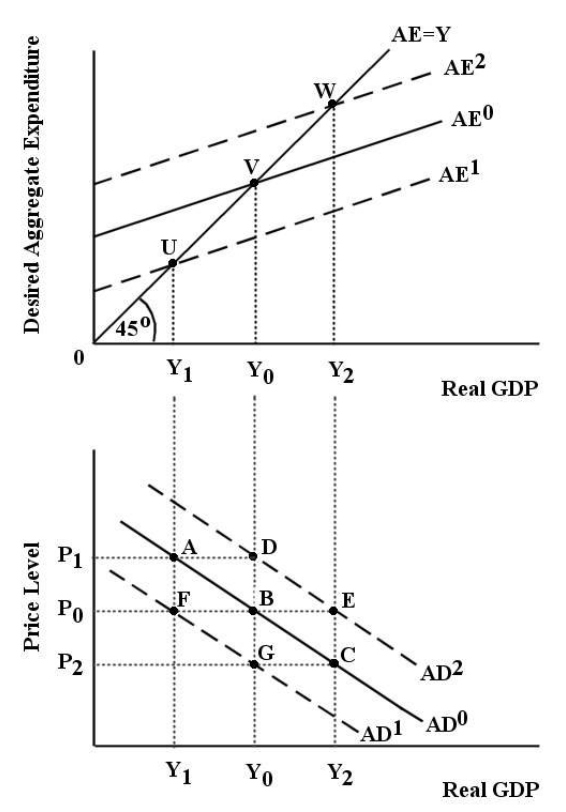Multiple Choice
FIGURE 23-1
-Refer to Figure 23-1.Assume the economy is initially in equilibrium with desired aggregate expenditure equal to real GDP at point V.The price level is P0.Other things being equal,exogenous changes in the price level will cause
A) movement along the aggregate expenditure curve AE0 and shifts of the AD curve.
B) movement along the aggregate expenditure curve AE0 and movement along the aggregate demand curve AD0.
C) shifts of the AE curve and shifts of the AD curve.
D) shifts of the AE curve and movement along the aggregate demand curve AD0.
E) no change in either the AE curve or the AD curve.
Correct Answer:

Verified
Correct Answer:
Verified
Q14: Consider a simple macro-model with demand-determined output.An
Q19: Consider the basic AD/AS model.When wage rates
Q26: Consider the basic AD/AS model.Suppose firms are
Q37: FIGURE 23-1<br><img src="https://d2lvgg3v3hfg70.cloudfront.net/TB2891/.jpg" alt="FIGURE 23-1
Q53: In a macro model with a constant
Q95: Consider the basic AD/AS model.Real GDP is
Q112: Other things being equal,when the domestic price
Q131: Suppose there is an exogenous increase in
Q131: Consider the economy's aggregate supply curve.Other things
Q138: Consider the relationship between the AE curve